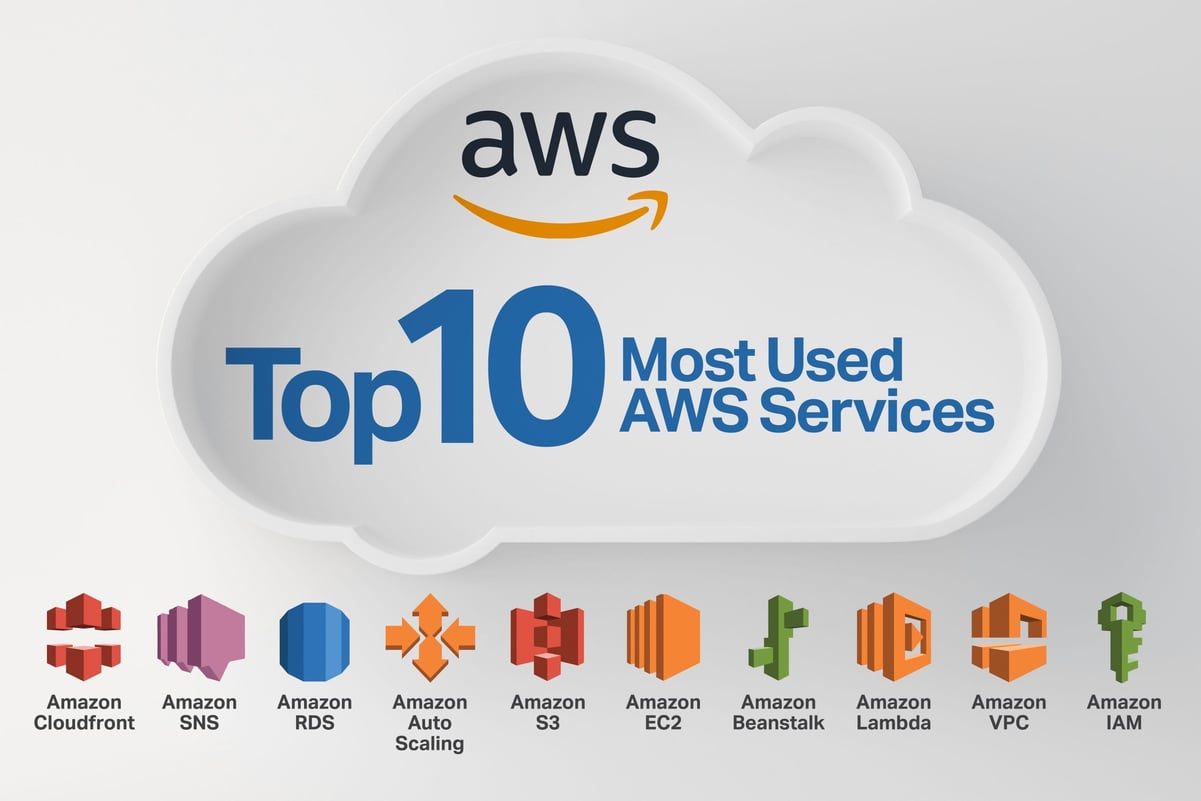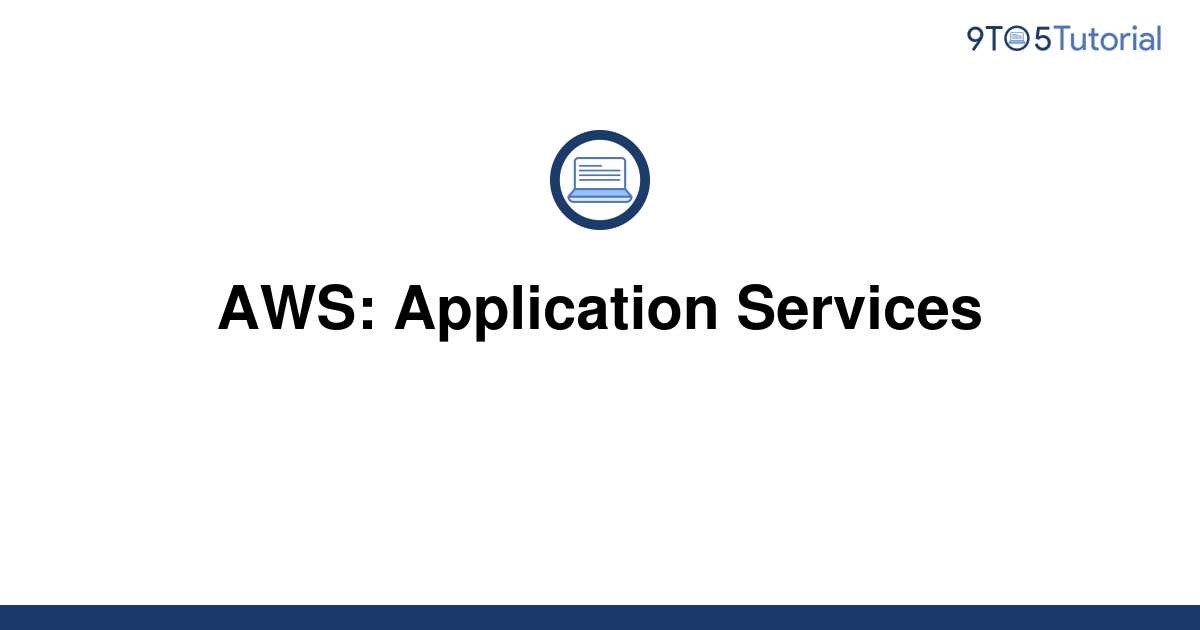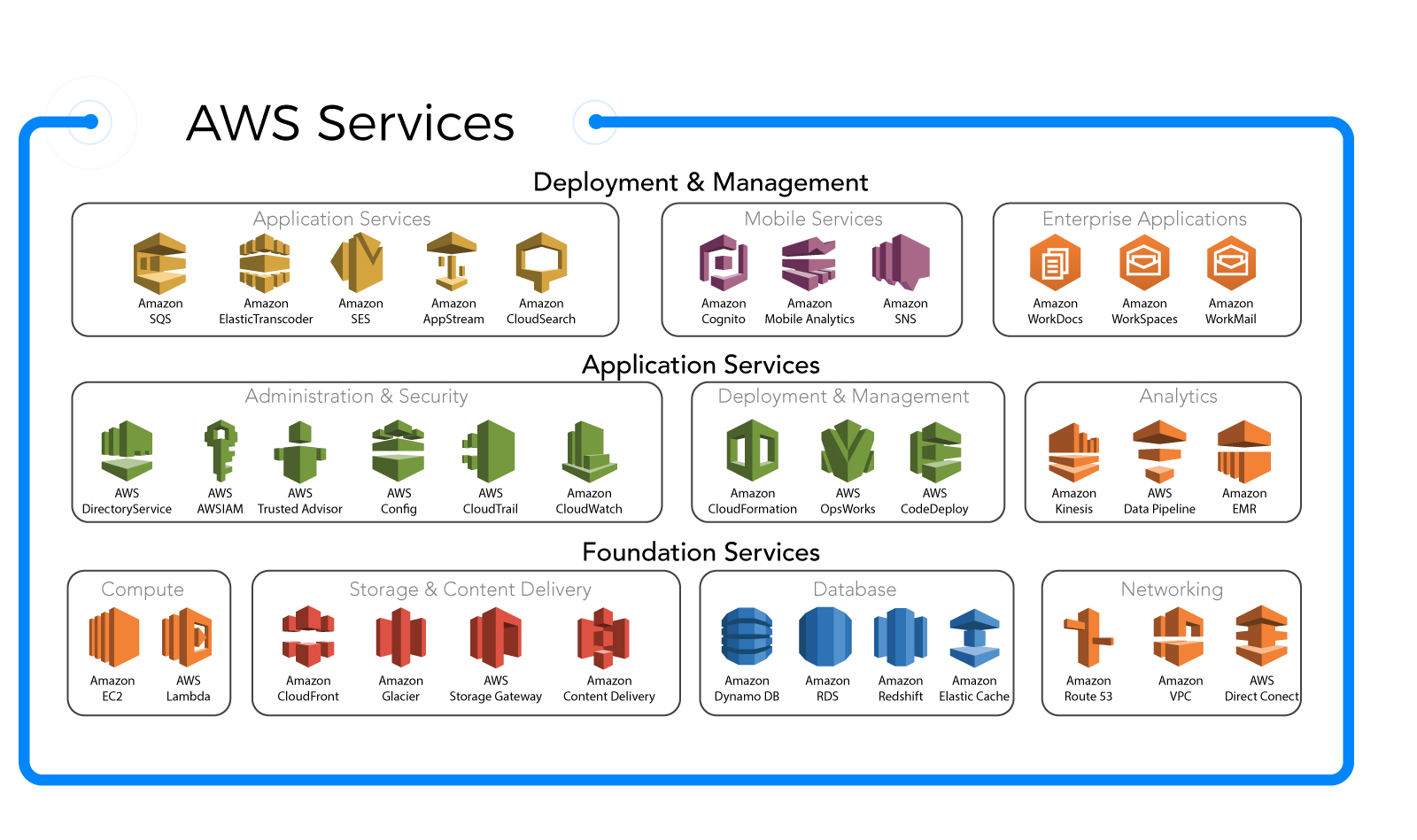Understanding AWS Application Services: An Overview
AWS (Amazon Web Services) application services offer businesses and developers a robust and flexible set of tools to build, deploy, and manage applications in the cloud. These services encompass a wide range of functionalities, from API management and serverless computing to messaging and event-driven programming. By leveraging AWS application services, organizations can streamline their development processes, reduce costs, and enhance security.
Selecting the right AWS application services is crucial for ensuring successful project outcomes. Factors to consider include scalability, security, cost, and integration with existing systems. By carefully evaluating these aspects, businesses and developers can create a tailored suite of services that meets their unique requirements and maximizes their investment in the AWS ecosystem.
Key AWS Application Services: A Closer Look
AWS offers a wide array of application services designed to simplify and enhance the development, deployment, and management of cloud-based applications. Among the most essential services are:
Amazon API Gateway
Amazon API Gateway is a fully managed service that allows developers to create, publish, maintain, and monitor APIs at any scale. With API Gateway, you can build RESTful and WebSocket APIs, secure them with HTTPS, and manage access control. This service is ideal for serverless architectures, real-time two-way communication applications, and microservices-based applications.
AWS AppSync
AWS AppSync is a scalable GraphQL service that enables real-time data queries and offline programming features. AppSync simplifies application development by automating the creation and management of data sources, such as AWS DynamoDB, AWS Lambda, Amazon Elasticsearch, and more. By using AppSync, developers can build data-driven applications with real-time updates, subscriptions, and offline capabilities.
AWS Lambda
AWS Lambda is a serverless compute service that lets developers run code without provisioning or managing servers. With Lambda, you can execute code in response to various events, such as changes to data in an Amazon S3 bucket or updates in a DynamoDB table. Lambda is designed to automatically scale and manage resources, allowing developers to focus on writing code and delivering features instead of managing infrastructure.
Amazon Simple Notification Service (SNS)
Amazon SNS is a fully managed messaging service that enables developers to decouple and scale microservices, distributed systems, and serverless applications. With SNS, you can fan out messages to a large number of subscribers, including AWS Lambda functions, Amazon SQS queues, HTTP/S endpoints, and mobile devices. SNS supports multiple messaging protocols, such as HTTP, email, SMS, and mobile push notifications, making it a versatile tool for various use cases.
These AWS application services, along with others, provide developers with a rich set of tools to build, deploy, and manage applications in the cloud. By understanding their features, use cases, and advantages, businesses and developers can make informed decisions when selecting and implementing the right services for their unique needs.
How to Choose the Right AWS Application Service
Selecting the appropriate AWS application services is crucial for building, deploying, and managing applications in the cloud efficiently. To make informed decisions, consider the following factors:
Scalability
Scalability is the ability of a system to handle increased workloads gracefully. When choosing AWS application services, consider their capacity to scale up or down based on demand. Services like AWS Lambda and Amazon API Gateway are designed to scale automatically, making them suitable for applications with unpredictable or fluctuating traffic patterns.
Security
Security is a top priority for businesses and developers. AWS application services offer robust security features, such as encryption, access control, and compliance with various industry standards. When selecting services, ensure they meet your organization’s security requirements and align with best practices.
Cost
Cost is an essential factor in choosing AWS application services. AWS offers a variety of pricing models, including pay-per-use, reserved instances, and spot instances. Evaluate the cost-effectiveness of each service, considering factors like usage patterns, resource requirements, and potential cost savings.
Integration with Existing Systems
Integration with existing systems is crucial for maintaining a seamless workflow. AWS application services support various integration options, such as AWS Step Functions for orchestrating workflows and AWS Glue for data integration. When selecting services, ensure they can integrate smoothly with your current infrastructure and tools.
To make informed decisions, carefully evaluate these factors and compare different AWS application services. Leveraging the right services can help businesses and developers optimize their cloud deployments, reduce costs, and enhance security.
Implementing AWS Application Services: Best Practices
Implementing AWS application services requires careful planning and execution to ensure successful deployments. Adhere to the following best practices:
Monitoring
Monitoring is essential for maintaining the health and performance of AWS application services. Use AWS CloudWatch to monitor resources, set alarms, and receive notifications. Regularly review metrics, logs, and events to identify trends, anomalies, and potential issues.
Logging
Logging helps track changes, diagnose issues, and enforce security policies. Enable logging for AWS application services and store logs in Amazon S3 or Amazon CloudWatch Logs. Use AWS Athena or Amazon Elasticsearch to analyze logs and gain insights.
Performance Optimization
Optimizing performance is crucial for delivering a positive user experience. Use AWS application services features like AWS Lambda Provisioned Concurrency, Amazon API Gateway cache, and Amazon SNS batching to improve performance and reduce costs.
AWS Guidelines and Industry Standards
Follow AWS guidelines and industry best practices when implementing AWS application services. Leverage AWS Well-Architected Framework, AWS Security Best Practices, and other resources to design, deploy, and manage cloud-based applications securely and efficiently.
By adhering to these best practices, businesses and developers can ensure successful deployments of AWS application services, optimize performance, and minimize potential issues.
Real-World AWS Application Service Use Cases
AWS application services have been successfully implemented in various industries, demonstrating their value and impact on business operations and customer experiences. Here are some examples:
Media and Entertainment
Major media companies use AWS application services to deliver content and personalize user experiences. For instance, a media streaming platform might leverage Amazon API Gateway to manage APIs, AWS Lambda for serverless computing, and AWS AppSync for real-time data queries. These services enable the platform to scale seamlessly, reduce costs, and enhance user engagement.
Healthcare
Healthcare providers utilize AWS application services to securely store and process sensitive patient data. Amazon SNS can be used to send notifications about patient appointments, test results, or medication reminders. Meanwhile, AWS AppSync can enable real-time data sharing between healthcare professionals and patients, improving collaboration and care coordination.
Finance
Financial institutions leverage AWS application services to build secure, scalable, and cost-effective solutions. AWS Lambda can be used to automate financial processes, such as transaction reconciliation and risk assessment. Additionally, Amazon API Gateway can manage APIs for third-party integrations, ensuring secure data exchange and regulatory compliance.
These case studies illustrate the versatility and effectiveness of AWS application services in various industries. By implementing these services, businesses and developers can streamline operations, reduce costs, and improve customer experiences.
Comparing AWS Application Services with Competitors
When selecting cloud providers for application services, businesses and developers often compare AWS with alternatives like Google Cloud Platform (GCP) and Microsoft Azure. Each platform has its strengths and weaknesses, and understanding these differences can help you make informed decisions based on your unique requirements.
Amazon API Gateway vs. Google Cloud Endpoints and Azure API Management
Amazon API Gateway, Google Cloud Endpoints, and Azure API Management all provide API management capabilities. However, they differ in terms of features, pricing, and integrations. For instance, Amazon API Gateway offers advanced caching and throttling capabilities, while Google Cloud Endpoints excels in mobile API management. Azure API Management, on the other hand, provides robust security features and seamless integration with other Azure services.
AWS Lambda vs. Google Cloud Functions and Azure Functions
AWS Lambda, Google Cloud Functions, and Azure Functions enable serverless computing, allowing developers to build and run applications without managing infrastructure. AWS Lambda offers extensive language support, including Python, Node.js, Java, and C#. Google Cloud Functions primarily supports Node.js and Go, while Azure Functions supports C#, F#, Node.js, Java, and Python. Each platform has its unique pricing model, with AWS Lambda and Azure Functions offering more granular billing options.
AWS AppSync vs. Google Cloud Firestore and Azure Cosmos DB
AWS AppSync, Google Cloud Firestore, and Azure Cosmos DB provide managed NoSQL databases for application development. AWS AppSync focuses on GraphQL APIs and real-time data queries, while Google Cloud Firestore and Azure Cosmos DB offer flexible data models and multi-region replication. Each platform has its advantages and disadvantages, and selecting the right one depends on factors like data access patterns, scalability requirements, and cost constraints.
Comparing AWS application services with competitors is essential for making informed decisions. By understanding the strengths and weaknesses of each platform, businesses and developers can choose the best solution for their unique needs and requirements.
Staying Updated with AWS Application Services
Staying informed about updates and new features in AWS application services is crucial for businesses and developers looking to maximize their cloud investments. By regularly reviewing documentation, attending webinars, and participating in community forums, you can ensure your applications take advantage of the latest innovations and best practices.
Regularly Review AWS Documentation
AWS documentation is a valuable resource for learning about new features and best practices. Regularly review the documentation for your chosen application services to stay updated on the latest changes and improvements. AWS provides detailed guides, tutorials, and API references, making it easy to find the information you need.
Attend AWS Webinars and Events
AWS hosts various webinars, workshops, and conferences throughout the year, covering a wide range of topics related to application services. Attending these events can help you learn about new features, ask questions, and connect with other professionals in the field. Visit the AWS Events page to find upcoming webinars and conferences near you.
Participate in AWS Community Forums
AWS community forums are a great place to ask questions, share knowledge, and learn from other developers. Participating in these forums can help you stay informed about the latest trends and best practices in AWS application services. Visit the AWS Forums page to find a community related to your application services.
Staying updated with AWS application services is essential for businesses and developers looking to stay competitive in the ever-evolving cloud landscape. By regularly reviewing documentation, attending webinars, and participating in community forums, you can ensure your applications take advantage of the latest innovations and best practices.
Navigating AWS Application Service Challenges
When working with AWS application services, businesses and developers may encounter various challenges related to migration, integration, and maintenance. Addressing these challenges proactively can help ensure a smooth and efficient experience. Here are some tips and strategies for overcoming common obstacles:
Migration
Migrating applications to AWS application services can be complex, especially when dealing with large-scale, legacy systems. To simplify the migration process:
- Break down the migration into smaller, manageable tasks.
- Use AWS migration tools and services, such as AWS Server Migration Service and AWS Database Migration Service.
- Perform thorough testing before and after migration to minimize downtime and ensure data integrity.
Integration
Integrating AWS application services with existing systems and applications can be challenging due to differences in data formats, protocols, and APIs. To address integration issues:
- Use AWS integration services, such as AWS Glue and AWS Step Functions.
- Establish clear communication and collaboration between teams working on integration.
- Perform thorough testing to ensure seamless data flow and functionality.
Maintenance
Maintaining AWS application services requires ongoing monitoring, patching, and optimization. To streamline maintenance tasks:
- Use AWS monitoring and logging services, such as AWS CloudWatch and AWS CloudTrail.
- Automate routine maintenance tasks using AWS Lambda, AWS Systems Manager, or other automation tools.
- Regularly review AWS best practices and guidelines to ensure your services are up-to-date and optimized.
Navigating AWS application service challenges requires careful planning, proactive problem-solving, and the use of appropriate tools and services. By addressing these challenges effectively, businesses and developers can ensure a smooth and efficient experience when working with AWS application services.






